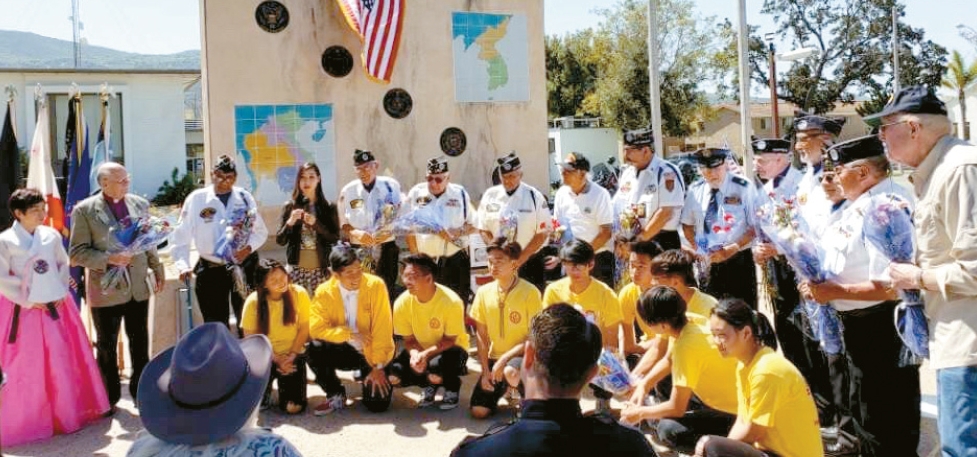The old soldiers are fading away.
This year marks the 75th anniversary of the Korean War, and with it, the war itself is slipping into history. The men who fought are passing on, one by one. Memorial ceremonies have vanished. Flags that once flew in remembrance are nowhere to be found.
No one set out to forget them.
But unless we remember the scars of war, the lessons it taught, and the meaning of its sacrifice, aren’t we allowing them to disappear all the same?
This story revisits the lives of surviving Korean War veterans, the fading state of their organizations, and what the U.S. and Korean governments must now do to preserve their legacy.

A Town That Remembered
Santa Paula, a quiet town in Ventura County, California, once held an annual ceremony on July 27 to mark the signing of the Korean War armistice. That tradition ends this year.
David Lopez, president of the Korean War Veterans Association (KWVA) Chapter 56, passed away in 2021. After his death, the gatherings began to fade.
For decades—since the early 1960s—local veterans held the event at a memorial park, where a monument and mural of the Korean Peninsula still stand. Now, that legacy is disappearing, too.
In 2020 and the surrounding years, many Korean American community leaders and second-generation youth had visited the ceremony. They were moved. Inspired.
Sally Lopez, daughter of the late David Lopez and a Torrance resident, said, “After my father passed, LA and Orange County chapters kept it going with small gatherings. But even those lost steam. Most of the veterans are now about 95. And frankly, the interest—from the community and public institutions alike—just isn’t what it used to be.”
David Lopez led the effort in 2003 to designate California State Route 126 as the Korean War Veterans Memorial Highway. But last year, his family and the remaining members made the hard decision to close the chapter. They submitted the final paperwork.
When the Korean War broke out 75 years ago, more than 100 young men from Santa Paula enlisted. Their sacrifice turned the town into a sacred site of remembrance for Ventura County.
Those soldiers weren’t just names on a plaque.
They were neighbors. Classmates. Sons and daughters. Someone’s love.
During the three-year war, 36,516 U.S. troops died. Another 8,176 went missing, and more than 100,000 were wounded.
Over 40 young men from Santa Paula never came home.
David Lopez returned—but barely. He survived the front lines, but lived the rest of his life haunted by trauma. Even through that pain, he founded the veterans group, and for more than 60 years, he never left its side.
Robert Sohn, president of the KWVA’s Los Angeles chapter, said:
“This isn’t just about losing a time or place to gather. It means future generations can no longer meet these men face-to-face. Their sacrifice becomes a fact in a textbook—not a living memory. And that’s what hurts the most.”
They Suffer Poverty and Isolation—But Want to Be Remembered
The KWVA Los Angeles chapter now has just three or four registered veterans. Most are bedridden or in hospitals.
The chapter continues outreach, folding in families and former members from nearby branches. But with limited funding and staffing, it’s becoming harder each year.
Across the country’s 400 KWVA chapters, the situation is much the same. The veterans are aging. Without new ideas or support, the gatherings of the past are no longer possible. Even the few remaining events have often been funded out-of-pocket.
According to U.S. Department of Veterans Affairs data, as of 2025, the median age of surviving Korean War veterans is 92. More than 70% are over 88.
David Pickett, national president of the KWVA, said:
“Many of these veterans are now in their mid-90s. Without family support, they live in poverty. In isolation. Almost like the homeless.
But what they want more than a few extra dollars in benefits is this:
To be remembered.”
The Last Living Link
These veterans once gave their lives to defend the Korean Peninsula.
Now, they risk being remembered only in black-and-white photographs.
Whether their sacrifice becomes a living legacy—or just a fading memory—now depends on the will of the Korean government and Korean American communities.
Sally Lopez was clear: “The ones who still understand what the war meant—we need to be the ones who take the first step.”
Etched into the back of the Santa Paula Korean War Veterans Memorial is a promise spoken by those who once stood on the battlefield:
“We will remember the Korean War veterans who never returned.
Who never again lived the lives they once knew.”
BY HANKIL KANG [kang.hankil@koreadaily.com]




